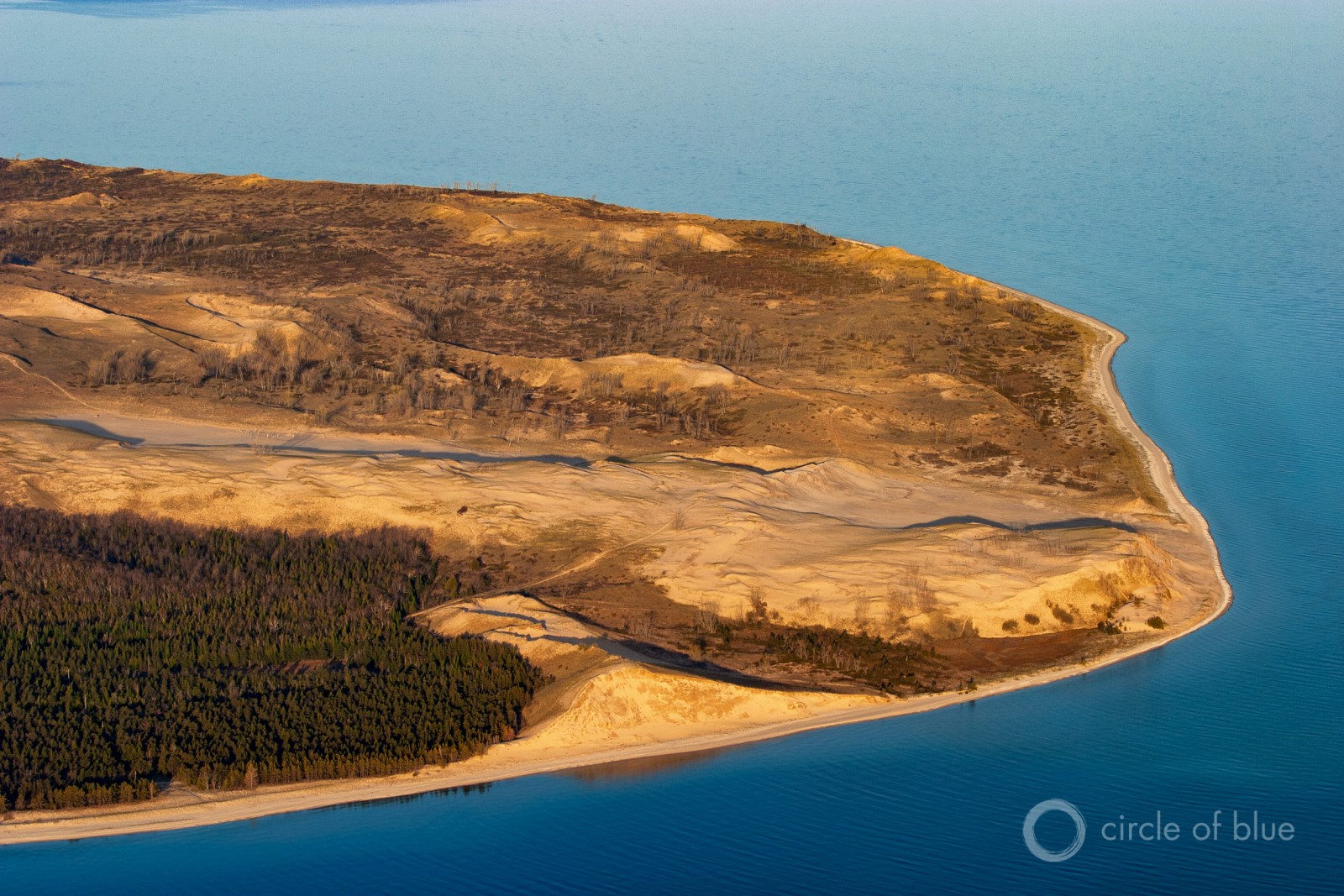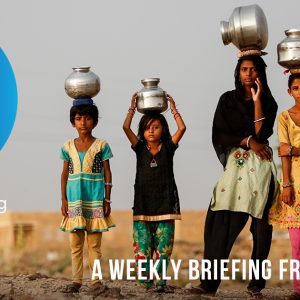The Stream, December 21, 2022: In Global Biodiversity Agreement, Freshwater Protection and Restoration Are Prominent

The sun rises over a wetland near Interlochen, Michigan. Photo © J. Carl Ganter/Circle of Blue
YOUR GLOBAL RUNDOWN
- At the UN biodiversity summit, roughly 190 countries pledge to protect 30 percent of the world’s lands and waters by 2030.
- Heavy rains and flooding continue to impact west and central Africa, reaching deadly heights in the Democratic Republic of the Congo.
- The world’s eighth-largest lake, in Canada’s Northwest Territories, receives support needed to become an Indigenous Protected and Conserved Area.
- Whitebark pine, an important protector of watersheds and ice in the Rocky Mountains and Pacific Northwest, has been listed as threatened.
Dams are increasingly blocking the flow of sediment in the Mekong River, drastically altering farming and livelihoods in Vietnam.
“The dams are trapping sediment … each one traps a certain amount, so there isn’t enough reaching the floodplains…Sediment and deltas should be able to regenerate and rebuild themselves. But the pace at which the natural balance is being forced to change in the Mekong is too fast for the sediment to keep up.” — Marc Goichot, a river specialist at the WWF in Vietnam.
The 2,700 mile-long Mekong is the longest river in Southeast Asia. It stretches through China, Laos, Thailand, and Cambodia before emptying into the ocean in Vietnam. Historically, the delta region is where the river deposits nutritional sediment that supports rice crops grown by Vietnamese farmers.
Reuters reports that the increasing number of dams upstream in the watershed has drastically reduced the amount of sediment that can reach these farming regions — from 147 million tons in 2007, to 43 million in 2020, to a projected 5 million in 2040. Farmers in the delta have already been forced to abandon rice for shrimp farming. Since 2009, this area has experienced Vietnam’s highest rate of emigration.
And it isn’t just farming — the flow of sediment influences ecosystems within the Mekong’s tributaries, including the health and movement of fish species. Still, more than a dozen dams are proposed or under construction along the Mekong.
In context: Dams, Sand Mining Threaten to Wreck Mekong Delta
— Christian Thorsberg, Interim Stream Editor
Recent WaterNews from Circle of Blue
- The Year in Water, 2022 — “Sharpening the Shark’s Teeth,” a roundup of Circle of Blue’s reporting and investigations, from climate change to public health to ecosystems.
- Federal Water Tap, December 19 — States Slow to Distribute Disaster Aid Funds for Housing
The Lead
In the final days of the United Nations Biological Diversity Summit (COP15), delegates from around the world committed to protect 30 percent of earth’s land, inland waters, and seas by 2030. According to the UN, only 17 percent of land areas and 10 percent of marine areas are currently protected.
Nations also pledged to restore degraded rivers, lakes, and coastal waters – at least 30 percent of those projects underway or completed by 2030. Four other frameworks, with 23 total targets, were also adopted as part of the agreement. Among these goals: reducing global food waste and hazardous chemical use, and requiring large companies to be transparent about their risks and impact on biodiversity.
Many outlets hailed the agreement as a landmark first step in remedying the biodiversity crisis, which coincides with the climate crisis. How these targets will be pursued, and if they will be reached, remains to be seen. Optimism isn’t ubiquitous. Some advocates have raised concerns over equity — because land “protection” has historically been associated with expelling humans, some governments may force the migration of millions of people, especially Indigenous communities who have stewarded biodiverse ecosystems for millennia.
The United States, which did not attend the conference, announced a similar “30 by 30” conservation plan in January 2021.
This Week’s Top Water Stories, Told In Numbers
2.9 million
Number of people in west and central Africa, in more than 20 countries, displaced by torrential rains and subsequent flooding over the past few weeks. A total of 8.2 million people, according to Al Jazeera, have been impacted by the extreme weather event. Kinshasa, the capital of the Democratic Republic of the Congo, was hit especially hard. More than 169 people have died in the flooding, OCHA reports.
85
Percent of whitebark pines that have disappeared from their historic range in the Pacific Northwest and Rocky Mountains. The tree, which was listed last week as “threatened” under the Endangered Species Act, plays a significant role in American West hydrology. The pines’ shade prevents flood-inducing snow and ice melt, maintains seasonal runoff and stream flow, and retains moisture in arid stretches of forest soil.
On the Radar
After years of advocacy, the Délı̨nę community successfully lobbied the Canadian government to give Tsá Tué, also known as Great Bear Lake, status as an Indigenous Protected and Conserved Area, The Narwhal reports. The agreement will allow the Délı̨nę to lead conservation initiatives along the lake, the community’s lifeblood, without fear of commercial intrusion. Still to be resolved: the amount of funding, if any, the Délı̨nę might receive from the federal government, which recently promised $800 million over seven years for Indigenous-led initiatives. Another lingering question is how the community will adapt to high rates of melting ice and falling caribou populations.
More Water News
Water Security: Trinidad and Tobago has received an $80 million loan from the Inter-American Development Bank to improve and sustain the country’s water infrastructure and supply.
Disputed Drinking Water: As of early December, bottled water discovered to contain bacteria remained on grocery store shelves in Bosnia and Herzegovina, the Sarajevo Times reports. Amid numerous health and safety questions — including how hazardous the water is, and which brands were contaminated — the nation’s institute of public health remained silent, refusing to speak with journalists.
Christian Thorsberg is an environmental writer from Chicago. He is passionate about climate and cultural phenomena that often appear slow or invisible, and he examines these themes in his journalism, poetry, and fiction.






Leave a Reply
Want to join the discussion?Feel free to contribute!